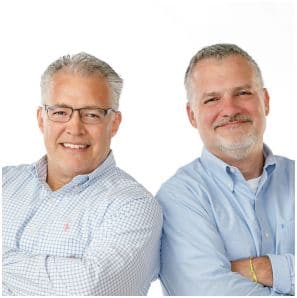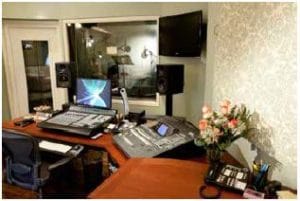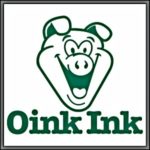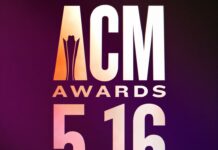
Does the radio industry take creative seriously enough to help clients succeed? Why do many advertising agencies lack the desire to spend time on radio creative, caring mostly about a television commercial that takes so much more time to produce and costs so much more than radio? Why do radio stations allow awful-sounding advertisers to record their own commercials? We turned to a very successful creative services company to try to find the answers.
Oink Ink Radio was founded 26 years ago, after Dan Price finished stints at Bert Barz in Los Angeles (Bert Berdis and Alan Barzman), following several years at RadioBand of America in New York City. Price knew it was going to take time to make a name for Oink Ink while Dick Orkin’s Radio Ranch, Bert Barz, and several others were still thriving. He hung out his shingle nonetheless and went to work teaching the industry about what he could do and working hard to push out great radio creative. It certainly paid off. After 26 years, Oink Ink has created thousands of great radio ads for hundreds of clients, and it’s still going strong.
Dan’s brother Jim (now Oink’s CCO and a partner) joined the company shortly after it was launched; he’d been freelance writing for Dan, so he was a natural addition. Today, as their roles have evolved with the times, Dan produces most of the work in the studio while Jim oversees the creative process and directs the writing pool. Oink Ink specializes in radio commercials, but over the years the company has morphed into a “radio agency.” Brands now reach out to Oink Ink directly, so, like any successful company, it’s had to evolve. Oink Ink is now not only called upon to create and produce radio ads, but to strategize, handle client services, and manage the entire process below the surface.
We spoke with Dan and Jim Price about the success of Oink Ink Radio, their thoughts on radio creative and why there are so many bad commercials, the elements of a great radio commercial, and their reflections on some of the best commercials they’ve ever heard.

RADIO INK: WHY DID YOU START THIS COMPANY?
Dan Price: While still in high school I remember listening to Chicken Man and some great ad work being done by Dick [Orkin] and Bert and thinking, “That’s what I want to do as a career when the time comes.” In fact, two or three times a year I’d call those guys, make up a phony “ad agency” name, and request their latest demo. I’d listen to their work over and over. I was an odd kid. But I set my sights on that goal and tried to take the steps necessary to pave the way.
RADIO INK: SPECIFICALLY, WHAT DOES THE COMPANY DO AND PROVIDE?
Jim Price: We conceive, write, cast, produce, and direct radio commercials. Occasionally we’ll produce agency-written scripts, too. We’re also developing several digital initiatives as those who know more about the tech side continue to introduce new technologies. There is a need now to provide great content using those innovations; we think that’s lacking. Our clients have come to count on us for our expertise in the terrestrial space; it was only natural that they’d begin to ask us about digital opportunities.
RADIO INK: HOW IS THE COMPANY DOING TODAY?
Dan Price: Hard as it is to believe (after all, radio gets very little respect, and even less so now), but 2017 was by far our best year ever — in our entire 26-year history. And that’s thrilling to us, that we’ve been able to not only remain resilient, as any small business needs to over time, but to adjust our business model as the situation called for it along the way as well.
We started out as a resource to ad agencies, then we seemed to attract a lot of media work (i.e., promos), and then we made a decision to target brands directly. It turns out there are still a lot of national brands who demand results and appreciate the attention we give their radio. Traditionally, ad agencies don’t treat radio as they do TV or other “sexier” media, and so that created an opportunity for us.
Many companies that were doing what we do didn’t make those adjustments, and as a result, we really have no direct competition anymore. They’ve pretty much all sort of faded away.
RADIO INK: WHAT IS YOUR OPINION ON CREATIVE IN RADIO?

Jim Price: Generally it’s pretty poor. (And I imagine that’s no big revelation to readers.) In fact, it’s the very reason the industry I’m in exists; radio creative has never been very good. But I also think it’s gotten less entertaining than it was back in the day. There was a time some of the radio was quite good, per capita at least. Now it all needs to work so hard. ROI wasn’t even a term you’d hear way back when.
And so our challenge nowadays is to develop cleverly creative ways to present hard-working spots. But overall, if you ask me, How is the general body of work out there? Well, you can ask my wife how many times I’ve expressed my desire to retire from this business as we drive down the road listening to the horrific spots on the radio. Man, there are a lot of bad spots out there. It’s to the point that I’d almost prefer some advertisers just do a straight read than try to be creative. Just brutal.
On average, I think there is more bad work in radio than in any other medium too. In fact, it’s not even close.
RADIO INK: WHAT IS YOUR OPINION ON HOW MANY COMMERCIALS STATIONS ARE PLAYING EVERY HOUR?
Dan Price: That’s a question I probably would not even have expected 10 years ago. Forever, we just sort of perceived the volume as “it is what it is.” I never really felt it was too many — just sort of a necessary evil. Now, of course, competition to terrestrial — i.e., streaming — has us wondering how the industry might be forced to adjust. And so maybe from a competitive standpoint, that number is going to need to decrease, which hopefully would increase demand (and rates). We’ll see. Radio is still a very effective tool to use to target consumers, and so there will always be demand.
RADIO INK: HOW SUCCESSFUL IS MY CAMPAIGN GOING TO BE IF I’M RUNNING SEVENTH OR EIGHTH IN A NINE-UNIT POD?
Jim Price: This might be naive; I tend to oversimplify radio’s effectiveness. But from my perspective, if your spot is good, it shouldn’t matter when or how it airs. By definition, if it’s “good,” it’s effective. Listeners just need to be exposed to it, and with some frequency.
Having said that, would a really good spot work even better if offered up earlier in a nine-unit pod? Sure. But remember, most radio ads are not very good, as discussed earlier. Your spot will stand out more by virtue of the fact that all the others running before and after it are dreadful. So we always recommend “just do good work.” That’s what our clients come to us for.
RADIO INK: WHY DO RADIO STATIONS ALLOW SOME VERY BAD-SOUNDING CLIENTS TO RECORD THEIR OWN SPOTS?
Dan Price: Wow. Great question. There are two examples that come immediately to mind: one in Florida (a car dealer), the other in the Philly area (a jeweler) that drive me berserk Where the magic happens: Oink Ink’s Verbatim Studio recording facility when I hear them. Just. Awful. Keep in mind these are the two that stand out as being unlistenable in a sea where none are actually good.
And you can just imagine the conversations they have with their agency or radio station rep: “Yeah, so I was thinking, it might make sense if, you know, I voiced our commercials. After all, who better to tell folks about our great offerings than me?” You would hope the rep would reply with, “Uh, yeeeaah. See, I was sort of thinking we might try doing a good spot instead.” Never happen. If the client pays, she can do whatever she wants, I guess.
Fortunately, we’ve never encountered this. As I say, our clients realize they need help with the work. And they also appreciate that we’re there to consult and make recommendations. They spend a lot of money airing their spots. We need to make sure they work — lest we never hear from them again.
I think radio stations don’t realize that poor spots reflect poorly on them, not just their client. I mean, it’s the station that suffers most when a listener flips to another station.

RADIO INK: WHAT ARE THE ELEMENTS THAT MAKE UP A GREAT-SOUNDING RADIO AD THAT WILL PRODUCE RESULTS FOR A CLIENT?
Dan Price: 1. The initial few seconds need to create interest or attract attention. It could be jarring, could be subtle, but it can’t just be “seamless.” There are many better examples than this, but I remember distinctly directing the child actor we used in our Rainbow Foods spot (the cursing kid) to use a specific cadence when he delivered his first five words. In every spot we do, I try to establish that “we’re beginning our story now, you might want to listen.” Like the snap of a finger.
2. The story you tell needs to then keep that attention. The best vehicle to achieve that is by making sure the narrative is interesting for the listener. Of course, what’s interesting to one may not be interesting to another. And so tapping into our own personal experiences as we write copy is a great way to go. Because the stories we have to tell will likely be relatable to the average person, at least on some level. Not necessarily the exact, literal experience, but certainly the emotion elicited during that experience.
3. The product you are selling must solve the problem that you’ve established in number two.
4. Pay it all off in a way that rewards a listener for his/her time. I think way too often, the people producing radio spots don’t consider the fourth, seventh, 18th “listen.” Using one (often bad) joke at the end, for example, is “old news” the second time the listener hears your spot. We try to create little “magical moments” in each commercial so that the audience doesn’t tire so quickly of hearing it. That’s not easy, of course. These are, after all, radio commercials; to people outside our industry, they aren’t considered art. Also, if it is humor you are going for, it had better be good. No one wants to hang with “that guy down the street” who thinks he’s funny, but isn’t. We all know him.
5. And this isn’t a “must,” but the technique I like best, and the one I think listeners  appreciate, too, is the “slow reveal.” It was employed in a Tide spot I’ve mentioned, as well as some of our own best work (“Traffic” for Jeopardy, “Guys With Kids” for NBC, “Babysitter” for Rainbow Foods). When you can create a level of interest that has the listener wondering, “Where is this going?” that’s a pretty special way to accomplish number two.
appreciate, too, is the “slow reveal.” It was employed in a Tide spot I’ve mentioned, as well as some of our own best work (“Traffic” for Jeopardy, “Guys With Kids” for NBC, “Babysitter” for Rainbow Foods). When you can create a level of interest that has the listener wondering, “Where is this going?” that’s a pretty special way to accomplish number two.
RADIO INK: HOW HARD IS IT TO CONVINCE AGENCIES TO USE BETTER CREATIVE FOR THEIR ADVERTISERS?
Jim Price: It’s hard. As I’ve said, we started our whole business because agencies were at one time willing to pay for better work. Even just for help tweaking and producing scripts they wrote themselves. They saw real value in enlisting the help of us or Dick or Bert or the others. I have to believe they still see the value (after all, many of their clients actually circumvent them and come directly to Oink), but agencies remain unwilling to spend the money on companies like ours.
They often dump the radio on the “junior guy at the end of the hall,” who then goes to the local studio and muddles through the process. Or clients themselves allow the station to do it for “free.” And there are only so many Jerry Lees out there. I wish they were all as passionate about plussing their commercial work as Jerry!
We’ve approached radio parent companies to help elevate the spots they offer their clients, which in the scheme of things would benefit both the client and the station, but have gotten nowhere with that.
It’s a hard sell. And to this day, it’s confounding. Why so little effort is put into the creation of radio ads, in spite of there being a willingness to spend good money to air them.
RADIO INK: NAME THE FIVE BEST RADIO CREATIVE CAMPAIGNS OF THE LAST YEAR.
Dan Price: I’d be hard-pressed to name five, truth be told. I have a pretty high bar and only notice one or two spots a year as being great. I liked the Tide “Tomato Soup” spot done this past year. Nice, simple, and using one of my favorite techniques: the slow — “Where is this headed?” — reveal.
Motel 6 is always good; I have to say, I see the name at awards shows but really don’t actually hear them on the air so much anymore. And some awfully good work continues to come from my friend Ralph vanDijk’s shop, Eardrum/Sydney. He produced a great campaign last year for the Visa Prepaid Gift Card.
Just last year we produced a 25-part podcast to celebrate Oink’s 25 years in business. In each installment we focused on a spot, offering some back story and context. We’ve done maybe 8,000 spots in our 25 years? We did identify a final five as being our “favorites.” Not necessarily the five best, but the five that marked significant milestones and were meaningful to Jim and me. They’re marked 1 through 5 [at http://oinkcreative.com/25thanniversary], along with 20 others that were also significant. The spots air within the podcasts.
Reach out to Dan and Jim Price at Oink Ink Radio by phone at 212.334.5800 or [email protected]. The Oink Radio website is oinkcreative.com









In truth, Great creative is AWESOME – and rarer than we would like to admit. The dream of having EVERY AD reach the creative heights of Oink is not possible. Simple ads that address a need and offer a solution work GREAT on the Radio. Having done a lot of great ads – and THOUSANDS of adequate ads I do know – Dollar for Dollar & Time for Time…Radio Advertising gets Results Equal To – OR BETTER Than Any Other Media!! long Live Radio Advertising!!
The reason, Mike, they talk about everybody else being so bad is because, uh, everybody else, with the most rare of exceptions, really is that bad.
Even the 90% or so of the “direct response” ads could be drastically improved. The very idea that regular spots can be dramatically enhanced without going to high, creative costs is a concept that is lost on almost every radio practitioner.
Most of us agree that big production spots are not on the radar, or even under consideration at the local station level.
So, the rest of us are compelled to work with a couple of arrows sticking out of our bodies.
For all their good points, they sure spend a lot of time talking about why everyone else is bad. It couldn’t hurt to look at some of these things as slightly subjective. Maybe those ads that drive people berserk are sometimes accomplishing the client’s goal. Sometimes by accident, sometimes by design. Not every client’s needs are accomplished by deep storytelling and massive production value either. Sometimes a simple, sincere message works just as well.
I agree Mike!
That corp0orate radio wants nothing to do with the high-calibre producers comes just before the speakers blast out The March Of The Lemmings.
Dave, spot on.
Why?
Probably because on air staff is told to do production work between doin their on air shift, setting up their shift, doing social media posts, going to remotes, writing for their blog, cleaning the bathrooms, fixing equipment, trying to get promotion info out of the sales staff, etc….. and most getting whatever script the salesperson cobbled together, the last moment, a few hours before the flight is suppose to run.
Basically it sounds bad because radio is cheap and hefts too much on people…. quality suffers. But management figures as long as it’s billing and playing, it’s all good. And the salesperson doesn’t care all that much…. they’ve moved onto the next sale so they can take every Friday off.
That is true Dave